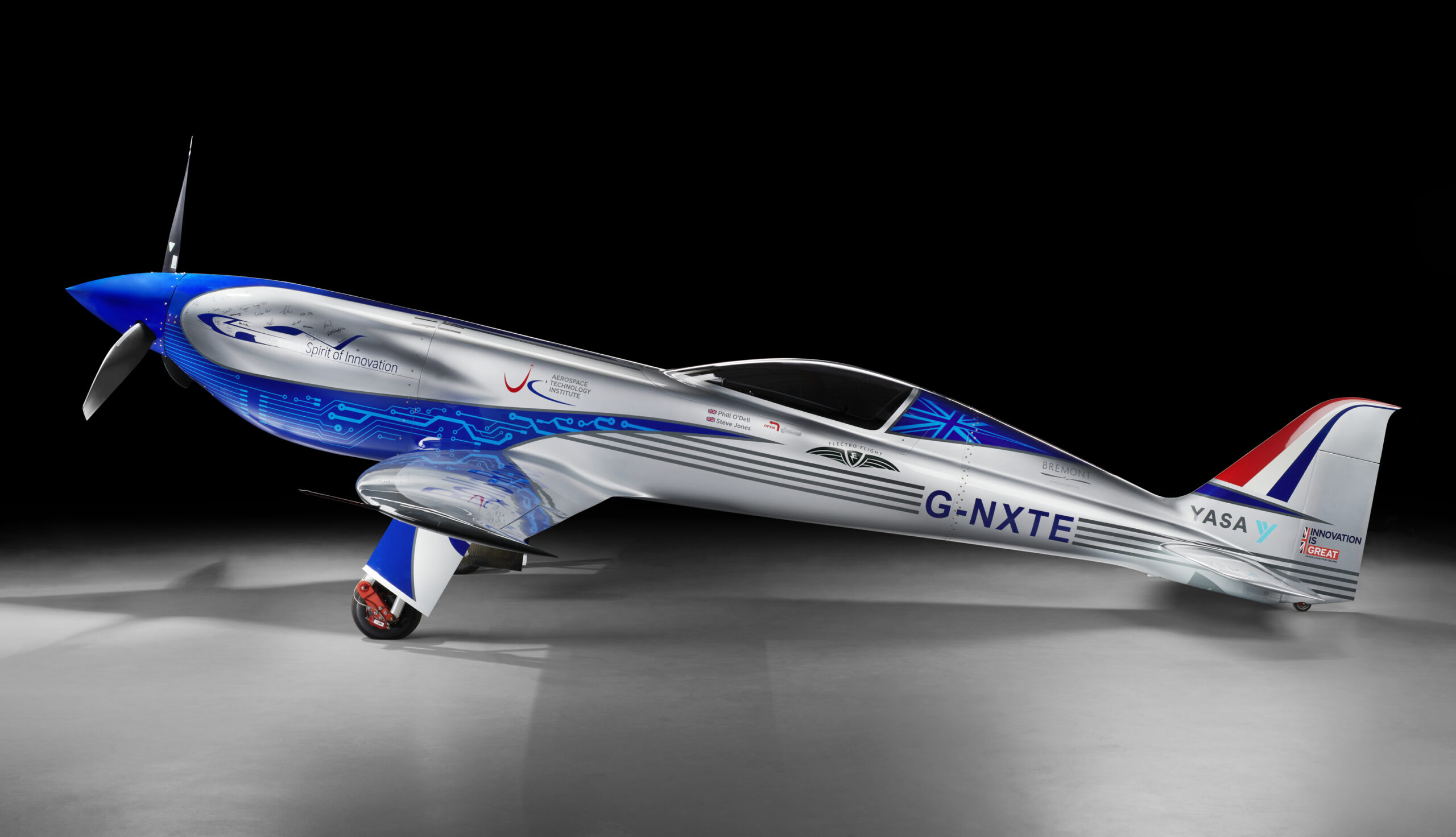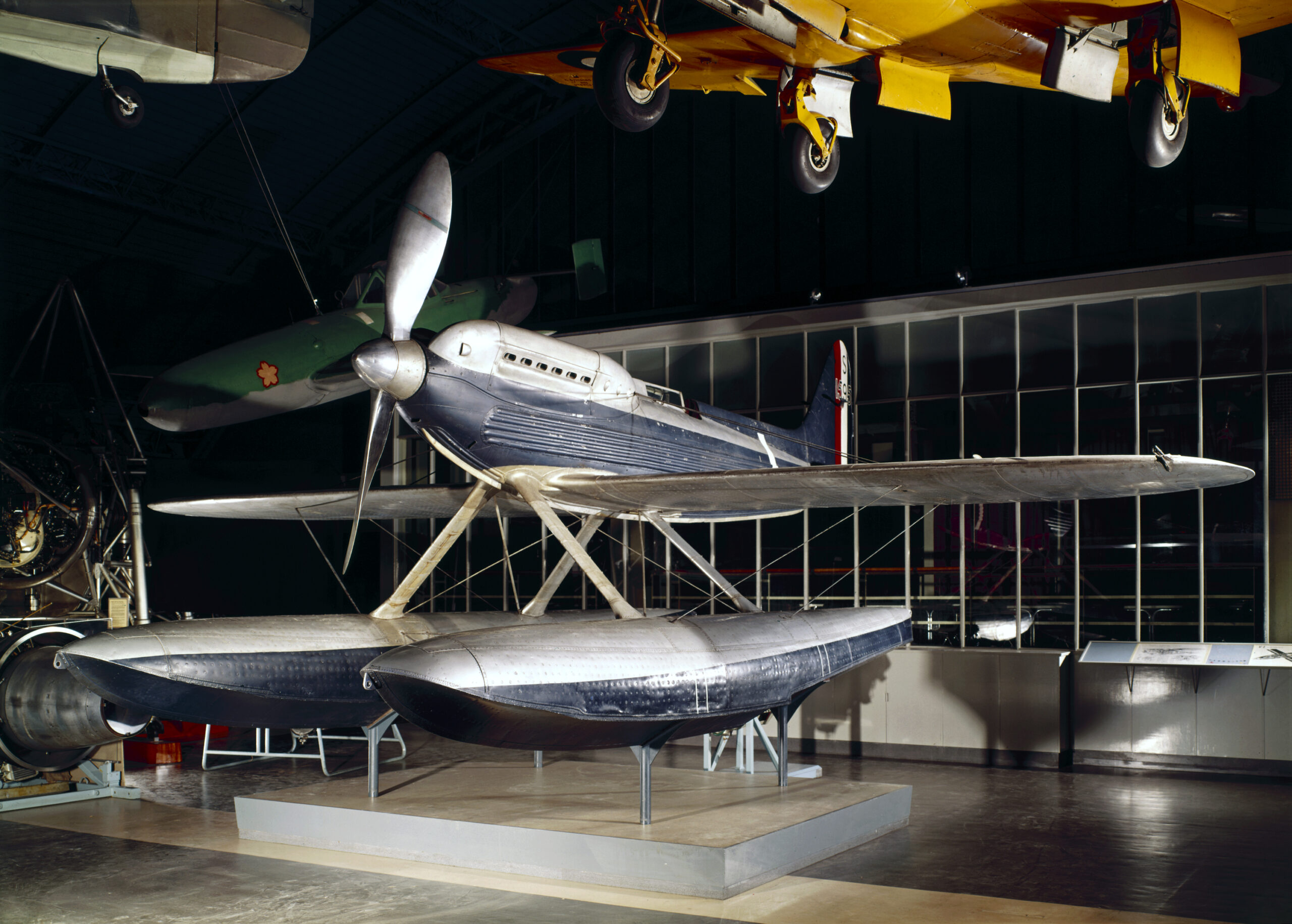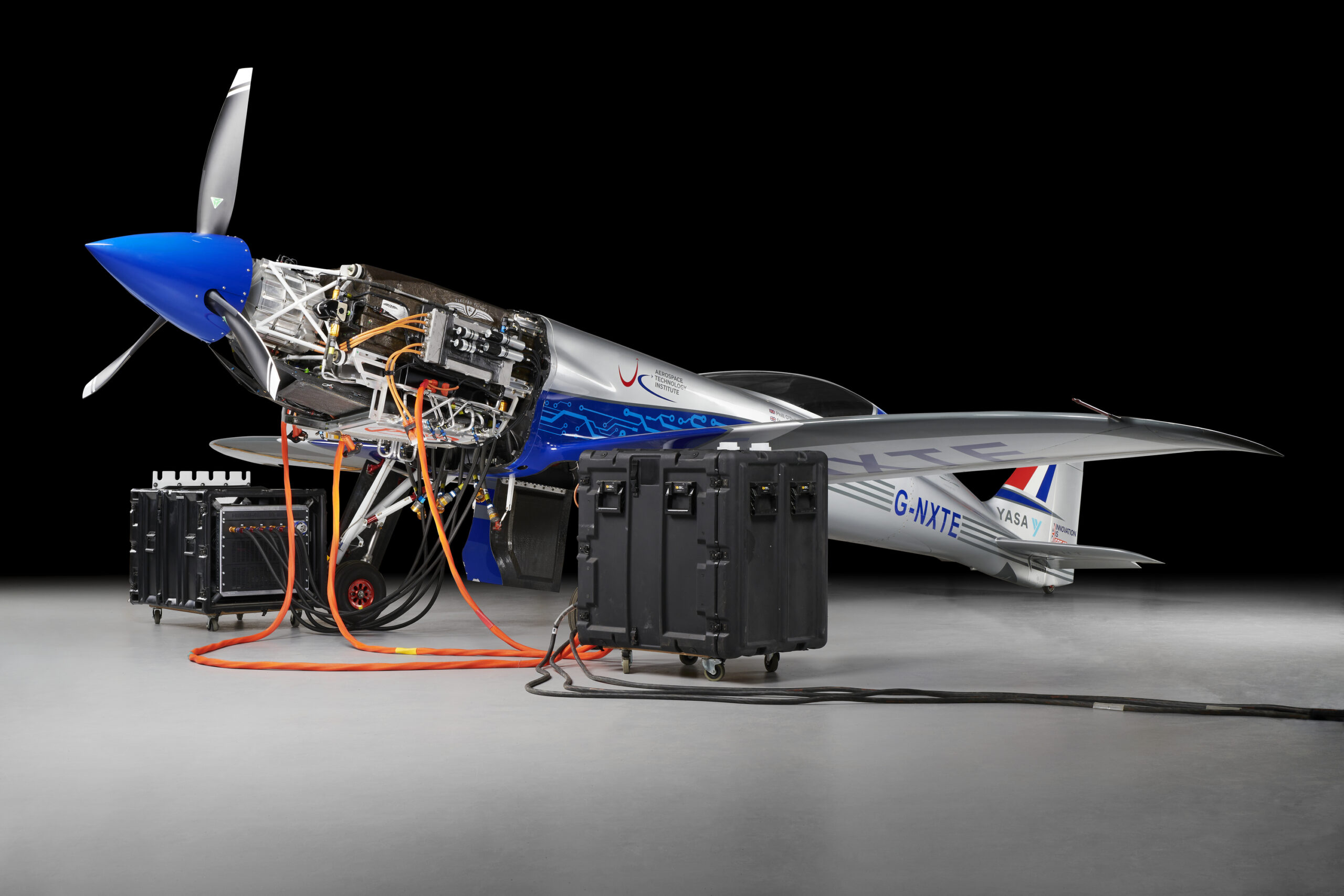
In 2019, more than 4.5 million passengers boarded flights globally. This number might exceed 10 billion journeys per year by 2050. This would add as much as 21.2 gigatons of emitted carbon to the atmosphere, making the aviation industry one of the biggest contributors to climate-damaging greenhouse gas emissions.
Recognising the detrimental effect this would have, the International Air Transport Association aims to reach net zero carbon by 2050. To achieve this ambitious goal, the aviation industry needs radically new solutions to power aircraft, from sustainable fuel to new technologies like electric and hydrogen propulsion.
Spirit of Innovation – the record-breaking aircraft now on display at the Science Museum – is an example of such pioneering technology and may help pave the way for a future of low-carbon flight.
The aircraft was built as part of the British aero-engine manufacturer Rolls-Royce’s project ‘Accelerating the Electrification of Flight’ (ACCEL), and in collaboration with Electroflight (now part of Evolito), YASA, and the Aerospace Technology Institute.
The goal was an ambitious one: to set the record for the world’s fastest electric aircraft by beating the current speed records for flying 3 kilometres, then 15 kilometres and climbing to 3,000 metres altitude.
In November 2021, the team succeeded on all three accounts. Over Boscombe Down in Wiltshire, Spirit of Innovation reached a top speed of 555.9 km/h over 3 kilometres, almost doubling the 2017 record of the German Extra 330LE aerobatic plane powered by a propulsion system from Siemens. Not only does this make Spirit of Innovation the fastest electric vehicle but it also demonstrates how quickly technology is moving and how soon it might change the ways in which we travel.
Breaking the all-electric speed record was not the first time Rolls-Royce has entered the history books. Starting off as a manufacturer for motor cars, the company developed its first aeroengine in 1915.
The engine was called ‘Eagle’, and four of them powered a Vickers Vimy biplane used for the first non-stop transatlantic flight by Alcock and Brown in 1919 (which can be seen in the Museum’s Flight gallery), and another Vimy that carried out the first ever flight from London to Australia in the same year.
Around the same time, manufacturers and pilots began to compete to build the fastest seaplane in a race series called the ‘Schneider Trophy’. In 1931, the UK won the challenge with the Supermarine Rolls Royce Seaplane S.6. B. S.1595z, powered by a Rolls-Royce 1900 hp engine (and also on display in the Flight gallery).

Almost a century later, Rolls-Royce and its partners were about to break records again. Over three years, a dedicated team of engineers, technicians and test pilots worked on making the dream reality with the Spirit off Innovation aircraft.
The aircraft consists of a Nemesis NXT airframe designed for racing and is powered by an electric powertrain. The latter includes a battery-pack that drives the three motors, which in turn spin the propeller.
One of the main concerns in electric aviation is finding suitable and efficient battery technology. To break the speed record, the energy Spirit of Innovation needed equalled what it takes to power 250 UK homes. This meant that the batteries were extremely large and heavy.
But the heavier an aircraft is, the more lift is needed. So, figuring out how to keep the weight as low as possible was a key challenge for the team.

The two-seater aircraft was reduced to a single seat and the battery was designed as efficiently as possible. Of its total 450 kilogram weight, 300 kilograms come from more than 6,000 battery cells, making it the world’s most energy-dense flying battery pack.
Because batteries can get hot and cause safety issues, the powertrain was fitted with air-and water-cooling systems. Additionally, sensors provide the pilot with in-flight information on energy usage.
Despite its advanced technology, Spirit of Innovation’s battery only lasts for roughly an eight-minute flight. While this was enough to reach the goal of breaking the speed limit, it is not yet sufficient for other uses.

Developing battery-technology that enables longer flights, without being too heavy, is a challenge that has to be overcome to make electric propulsion a serious option for sustainable aviation. The rising demand of lithium for many types of battery has implications for our environment and societies. We are still learning about lithium supply chains, their social and environmental impact and their associated ethical and sustainability issues.
Across the aviation industry, dedicated teams are working hard to find solutions. In the same year Spirit of Innovation broke records, EasyJet announced a partnership with Wright Electric to begin an engine development program for a 186 seat electric passenger aircraft named Wright 1.
Rolls-Royce also plans to develop a complete electric propulsion system for vertical take-off and landing ‘air taxis’ and larger electric powered commuter aircraft. If successful, battery-powered aircraft charged with renewable energy could produce almost 90% less emissions than today’s planes running on jet fuel.